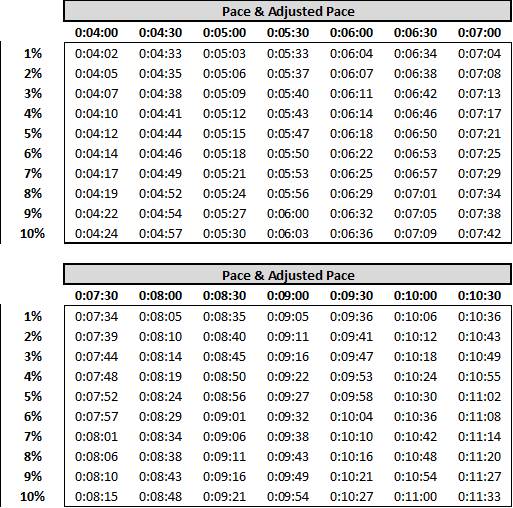Adjusting Your Running Pace In The Heat
Green trees, snow-free trails, and sunshine of the summer makes us think of some of our favorite time, right? But the reality is while you don’t have to deal with cold weather you do have to deal with heat and the sneakiest part, humidity. These two conditions affect training paces and performances more than a cold winter day could and in my opinion make running in the summer much harder than any other season.
When our muscles are expending energy while running(or in other physical tasks) most of this energy is lost in the form of heat. Even when you exercise in cold temperatures your body’s core temperature will rise(which a small rise is a great thing for performance as it increases blood flow). The harder you run the more heat that is lost from the muscles expending energy. Once your body crosses a certain threshold, of about 102 degrees you begin to see a sharp decrease in performance as the body goes into protection mode to cool itself by diverting blood to the skin rather than the muscles, much hotter and your body begins to actually shut down to protect itself. That is why pacing yourself even on easy days in hot weather is important not only to maximize performance but to also protect yourself from the dangers of heat exhaustion.
In one of the first installments of our training tips we’ll talk about the best way to plan for summer running and approaching your running the right way to set you up for success at your summer running and racing.
Adjusting running paces
The reality is that your race times and normal paces will be slower in hot & humid weather. There is no way around it as it’s a physiological fact. Keeping this mind as you approach your next workout will help you execute the race or workout the best you can for that day.
The formula that I have found extremely useful from Coach Hadley’s website. It combines both Dew Point and air temperature that I share with my runners are as follows.
Dew point is the most useful measure of water saturation in the air and the effect on our body. Relative humidity is just a percentage of the Dew Point and Temperature(Don’t ask me why we use relative humidity if dew point is a more accurate gauge, but it is what it is).
So take the air temperature and combine it with the dew point and find the combined number and then find where that number places you on the following adjustment chart.
100 or less: no pace adjustment
101 to 110: 0% to 0.5% pace adjustment
111 to 120: 0.5% to 1.0% pace adjustment
121 to 130: 1.0% to 2.0% pace adjustment
131 to 140: 2.0% to 3.0% pace adjustment
141 to 150: 3.0% to 4.5% pace adjustment
151 to 160: 4.5% to 6.0% pace adjustment
161 to 170: 6.0% to 8.0% pace adjustment
171 to 180: 8.0% to 10.0% pace adjustment
Above 180: hard running not recommended
This range exists for a few reasons. Some people are genetically more predisposed to handling the heat better than others. You can also train yourself to become better in the heat through acclimatization. That’s the reason why the first 70 degree day in the spring feels like a major heat wave but a 70 degree day in the fall feels chilly. Also other factors including the fitness level and even wind can make a difference on the effect of temperature.
If you need help figuring out how much 3% of 9:00 mile pace or any other pace below on the charts is the math for certain paces and the adjustments needed to calculate the percentage of those paces.
An example of a normal run in a North Carolina summer would be a run in 80 degrees with a Dew point of 70. If you add these two numbers together it creates a number of 150.
According to the chart this means we should expect paces that are 4.5% to 6% slower compared to perfect weather. If we were planning on heading out the door for a normal run at 8:30 pace we could expect about a 5% slow down so that an 8:56 mile would be about equivalent.
These charts are by no means can cover all our bases. But they can help set up our planning for workouts and races in the right way by making sure we are adjusting our paces. It’s when we don’t adjust to the reality of a hot day that we can get ourselves into trouble by running too hard and potentially causing overheating.
Leave us a comment if you have any more questions on heat & humidity on performance!


